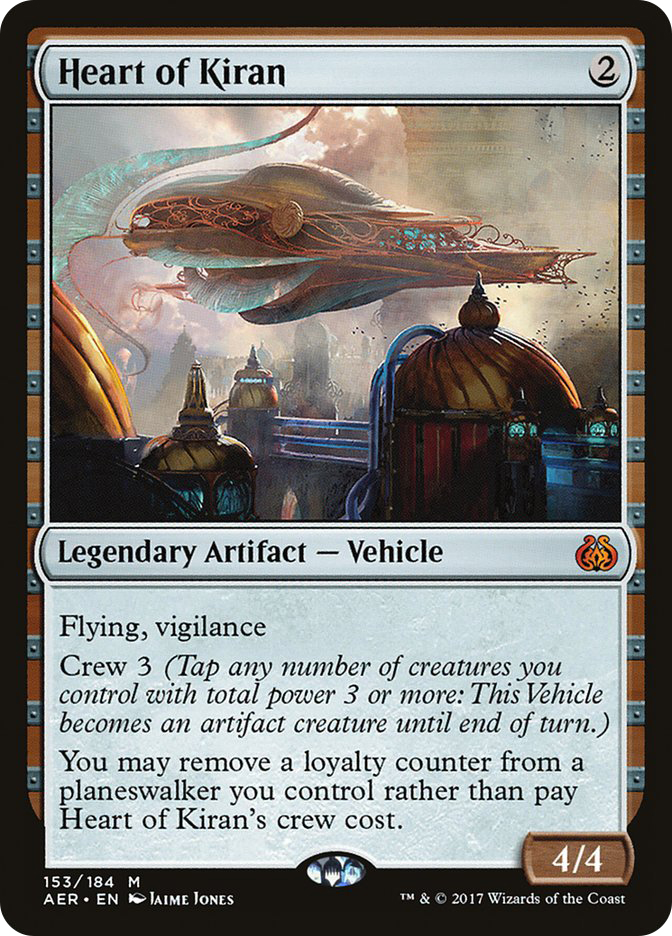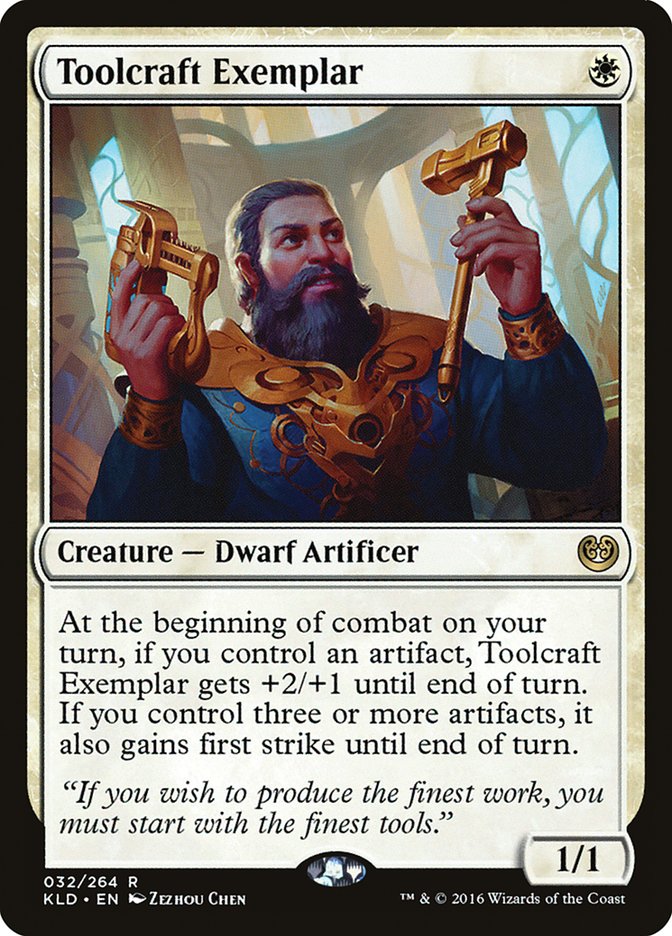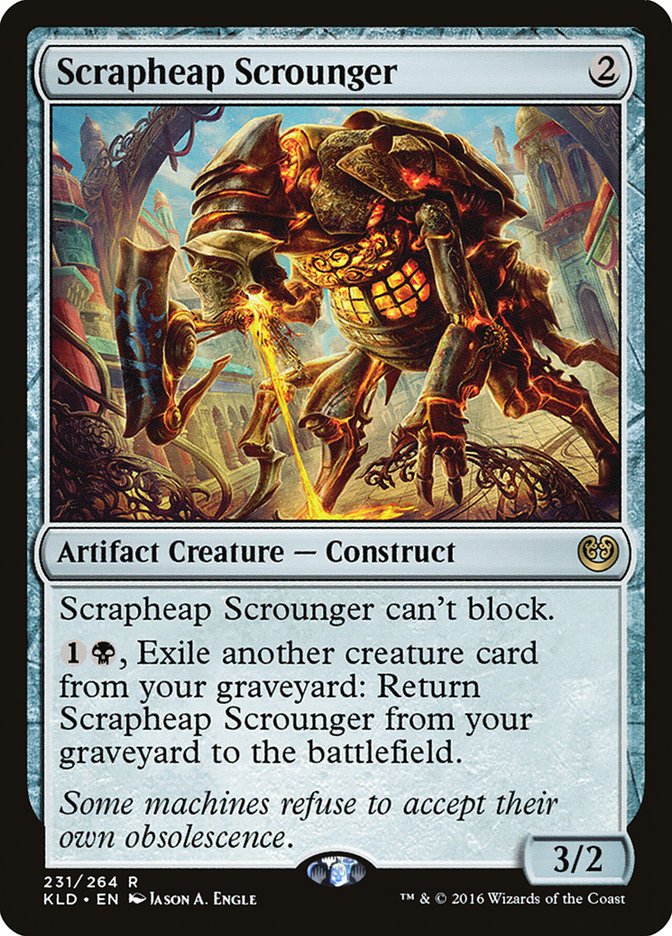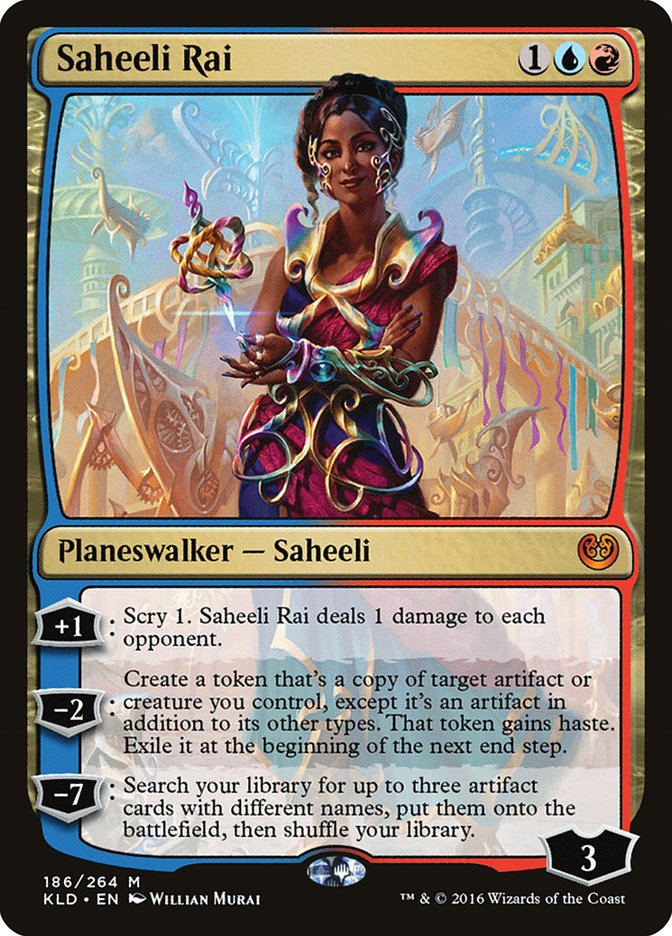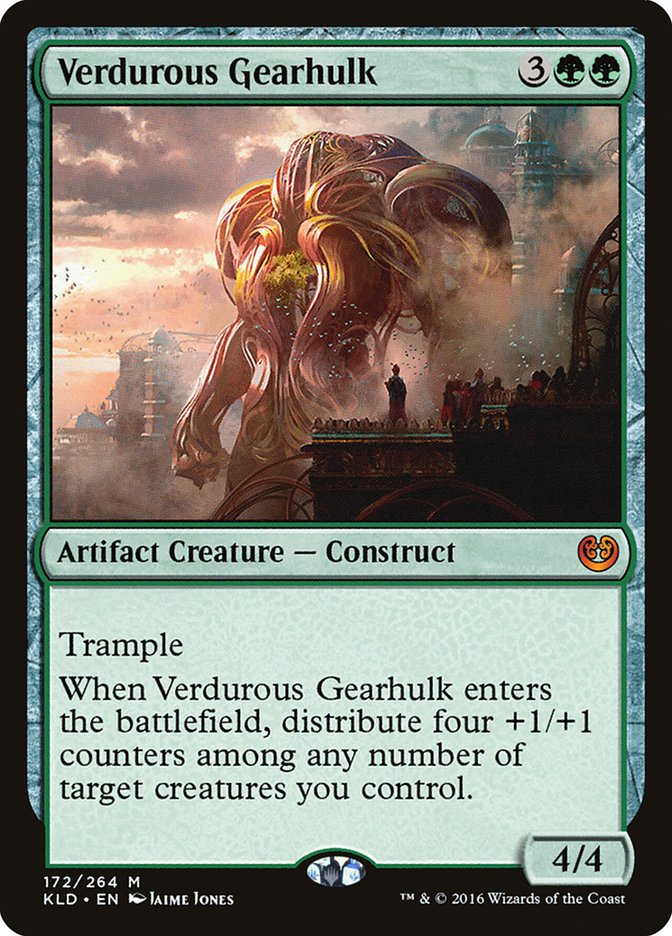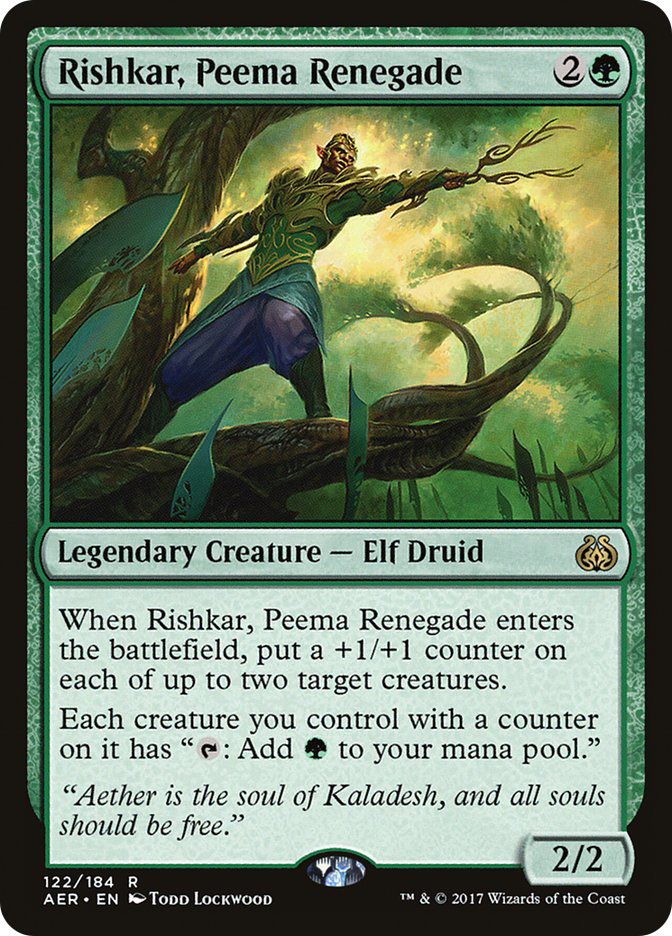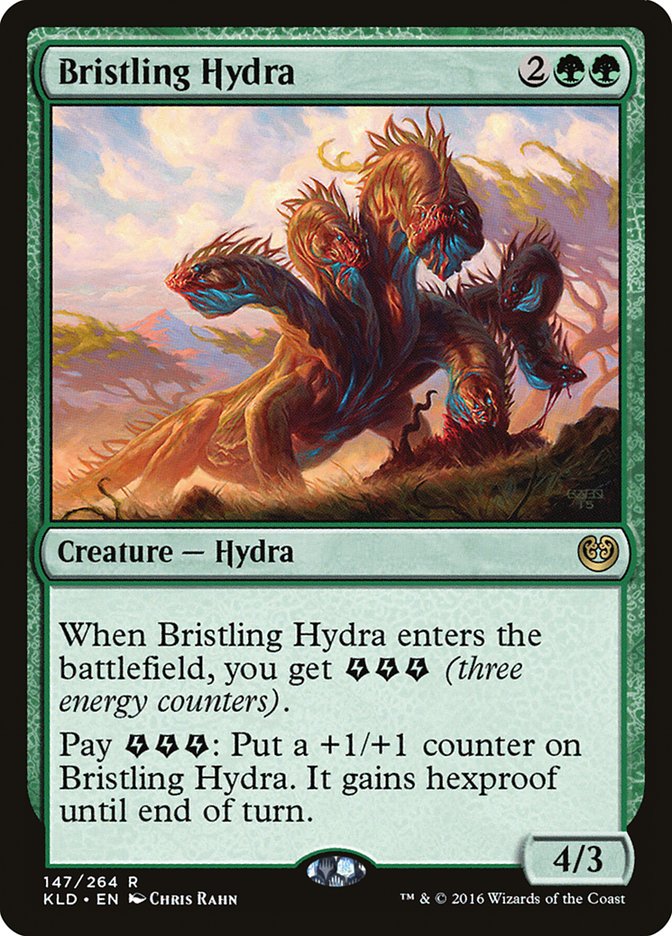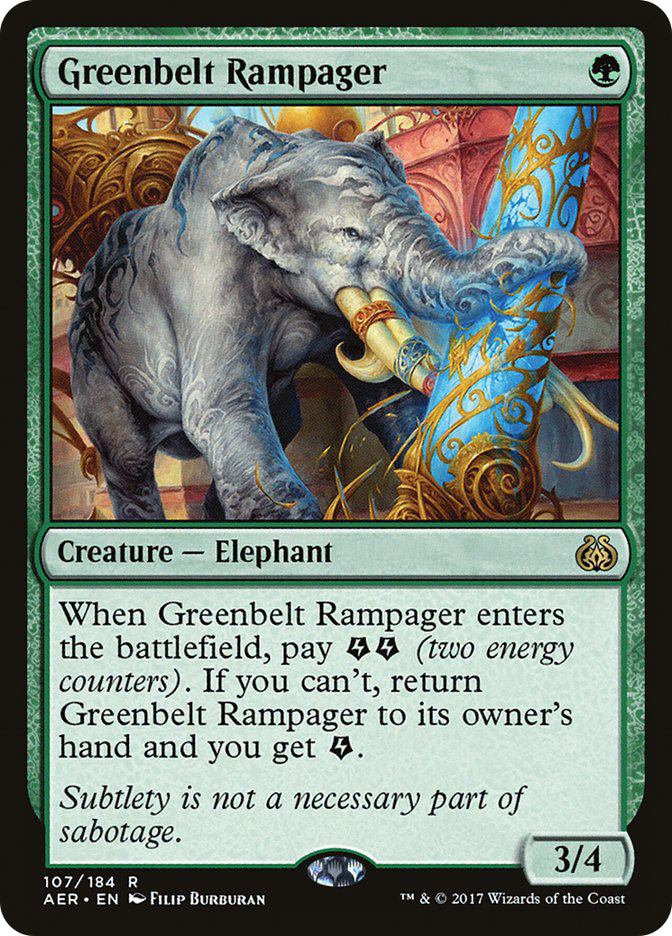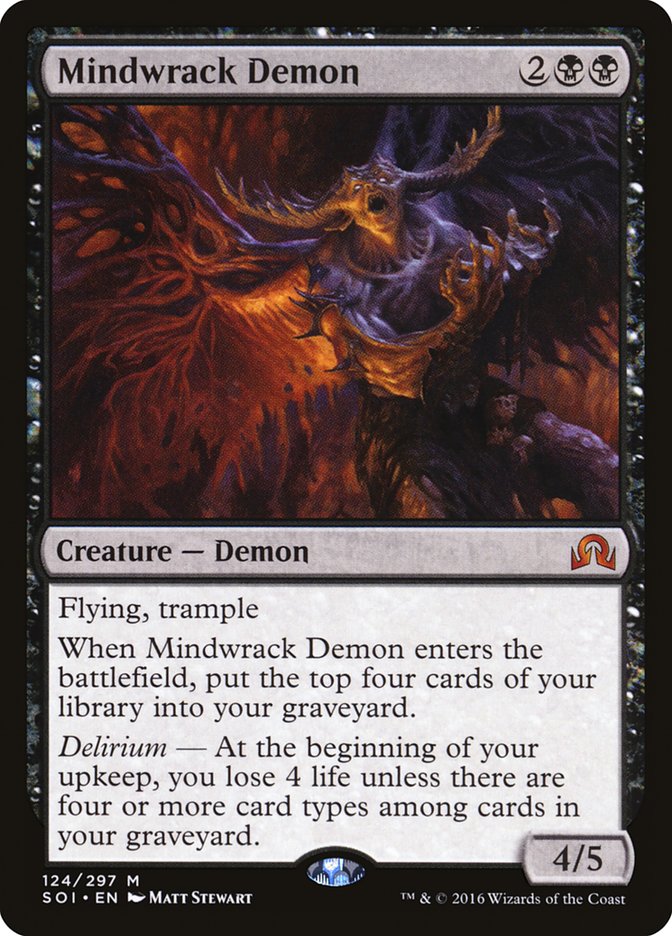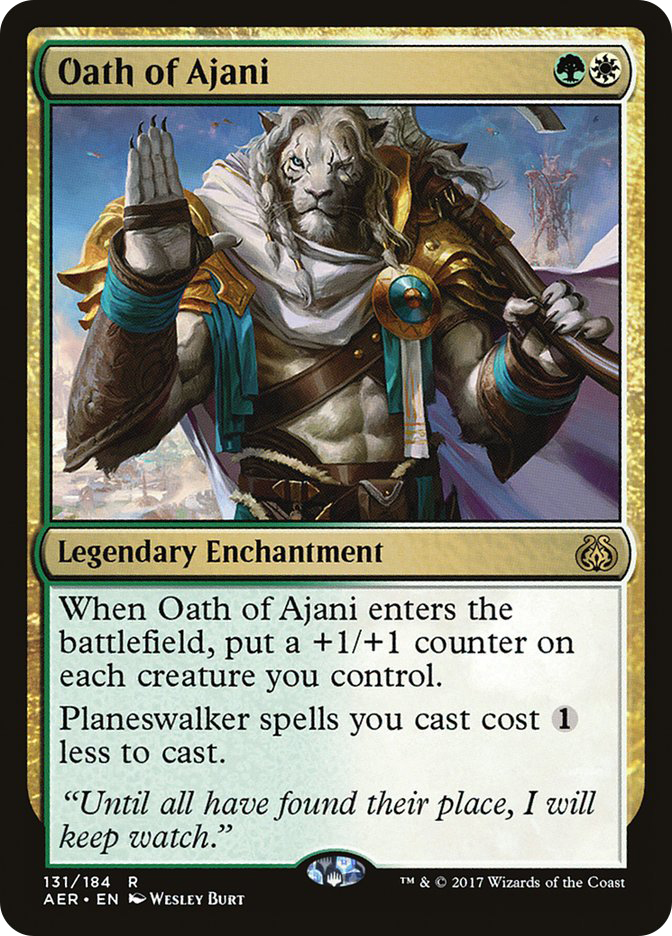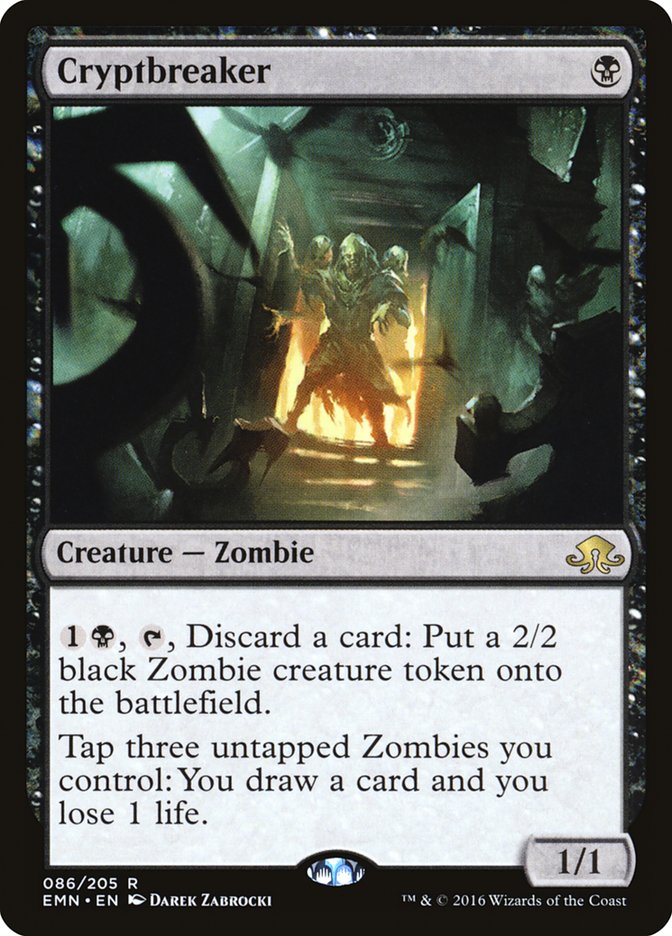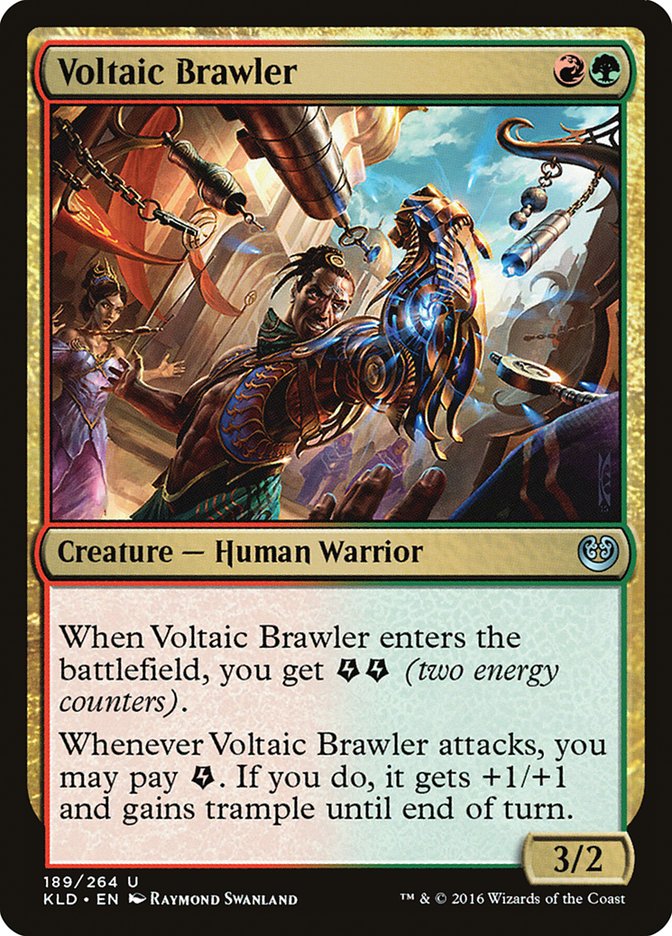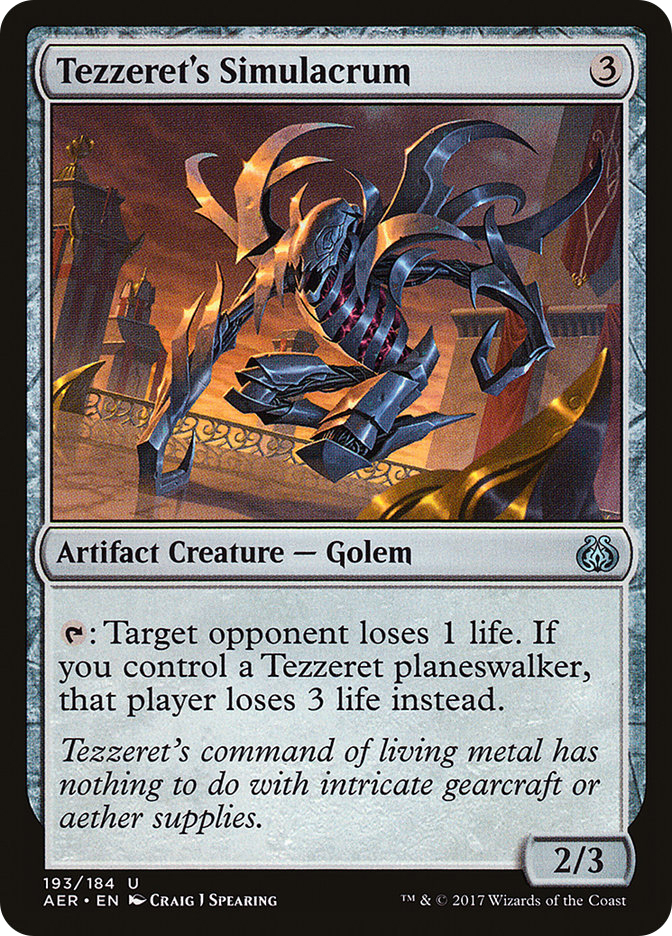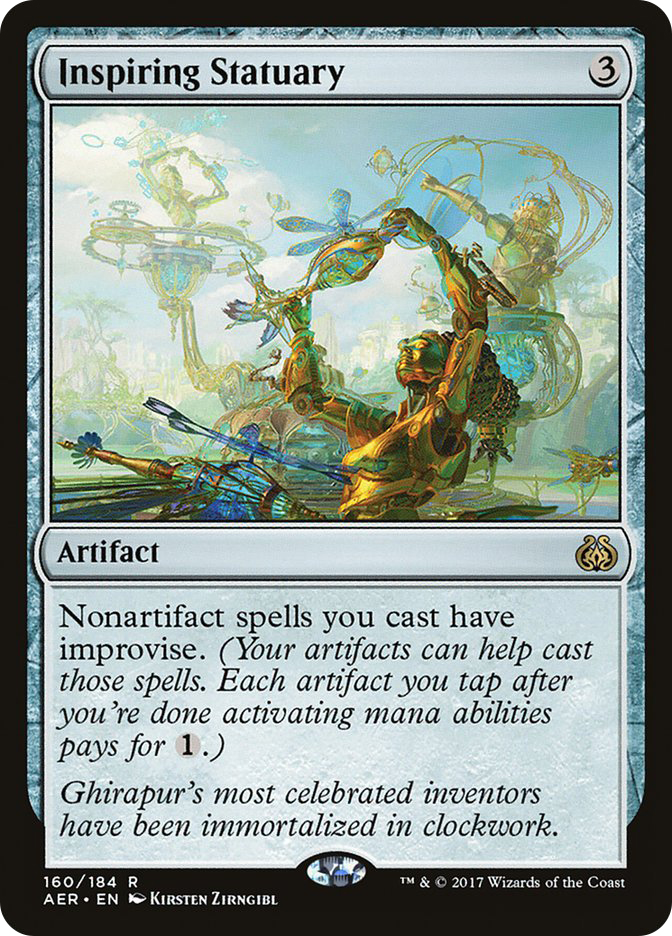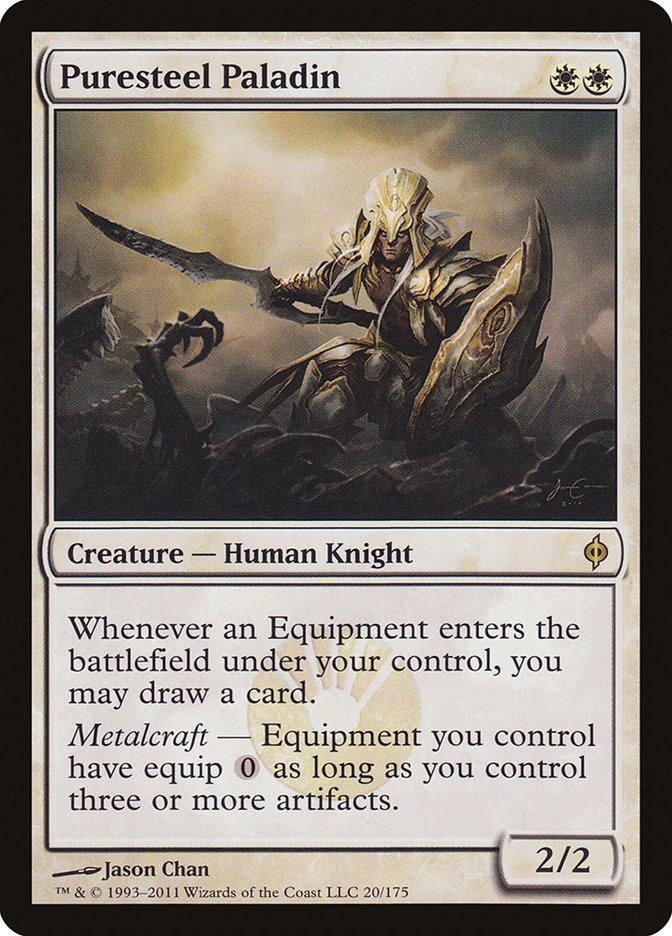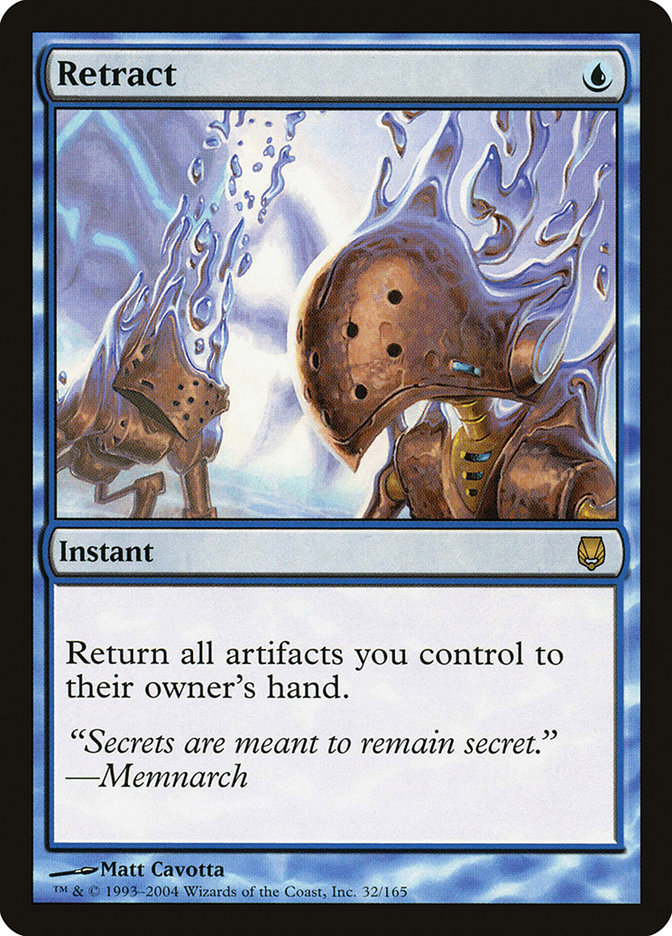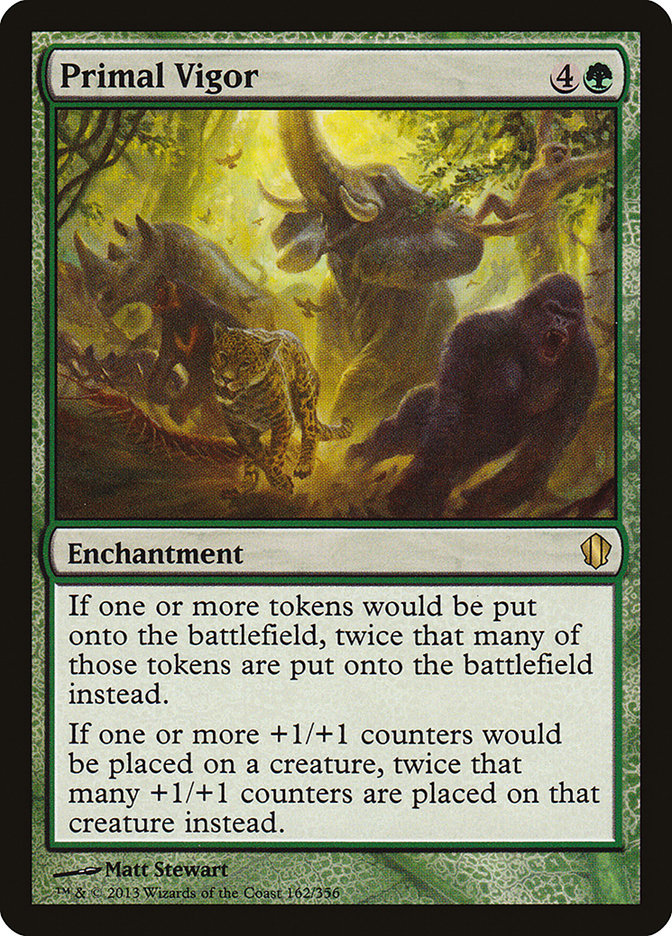If you had told me that six of the top eight decks at Pro Tour Aether Revolt were the same, I’d have assumed that Jeskai Saheeli had broken the format in half and that we’d be looking at a Saheeli Rai ban in four short weeks. Nope: instead, the breakout deck at the Pro Tour was…Mardu Vehicles, a brew that I had left for dead on the side of the road back when Smuggler’s Copter was banned. Whoops.
Mardu Vehicles had a great Pro Tour. I want to tell you that the Top 8 did not adequately reflect the diversity of the Day 2 metagame, but that would be a lie. In terms of actual results, Mardu Vehicles is one of the most dominant PT decks of all time.
Aside from that, the thing that really bummed me out about the Pro Tour was the almost complete lack of cool new combo and control builds. Tezzeret the Schemer was MIA, Paradoxical Outcome was under-represented, and all the Inspiring Statuary hype was for naught. In many ways, the breakout deck of the PT is just slight variation on a brew that has been kicking around the top tiers of the format since Kaladesh was released.
That said, Pro Tour Aether Revolt was a great event on several other levels. The coverage was excellent, there was some exciting Magic on camera, and the new pro teams added a level of intrigue to the proceedings. Wizards of the Coast’s slow embrace of Magic-as-eSport is going well.
I also think that there is a big difference between dominating an event and dominating a format. Mardu Vehicles is a great deck, but I don’t expect it to develop a stranglehold on the format like Collected Company did. But should you buy in anyway? And if not, what cards might be repurposed to fight Mardu? There’s a lot of financial news to unpack from Pro Tour: Aether Revolt, so let’s get started.
Creatures (22)
- 4 Thraben Inspector
- 1 Thalia, Heretic Cathar
- 2 Pia Nalaar
- 4 Scrapheap Scrounger
- 4 Toolcraft Exemplar
- 3 Inventor's Apprentice
- 4 Veteran Motorist
Planeswalkers (3)
Lands (23)
Spells (12)

Mardu Vehicles made up a full 3/4ths of the Top 8 at Pro Tour: Aether Revolt, so we have to start here. No matter how you look at it, this was the deck to play last weekend. 22% of the field brought Mardu Vehicles to Dublin, believing that pure aggression was the best way to beat Jeskai Saheeli. They were right. A full 76% (!) of Vehicles players made Day 2, an excellent conversion rate. Looking at the twenty-to-30-point Standard lists paints an even clearer picture of just how dominant this deck was. The top tables were dominated by Mardu players all tournament long.
Financially, the key cards in Mardu Vehicles are Toolcraft Exemplar, Scrapheap Scrounger, Heart of Kiran, and Gideon, Ally of Zendikar. The Mardu-colored lands and Spire of Industry can be grouped in this category as well. Should you buy these cards ASAP? I wouldn’t. The most important cards from the best PT decks tend to peak in price about two to three days after the end of the event, so you’re probably going to want to sell whatever copies of these cards you have kicking around right about now.
Heart of Kiran is the big one, and I expect it’ll end up peaking around $35 once all is said and done. It’s an incredibly powerful card, and I think it proves once and for all that R&D completely underestimated how good these Vehicles would end up being. Even if people do fight back hard against Mardu, Heart of Kiran will find a top-tier home in Standard as long as it’s legal.
I suspect that there will be a lot of talk about Heart of Kiran being banned a month from now. Considering how similarly it plays to Smuggler’s Copter, I wouldn’t wait around to find out—sell your copies ASAP unless you’re currently using them. Ironically, the Smuggler’s Copter ban probably helped Mardu Vehicles succeed at the Pro Tour because it gave the deck an element of surprise.
The other cards from Mardu are safer holds, though. Toolcraft Exemplar is just $2, which is quite low for a four-of in the format’s best deck. Scrapheap Scrounger is played in other aggro decks as well, giving it a higher floor. And Spire of Industry will probably keep seeing extensive play throughout Kaladesh block’s Standard legality.
But the big reason why I can’t recommend running out and buying every card from this deck is that it goes from great to pretty good if Jeskai Saheeli isn’t around en masse. Mardu Vehicles was designed to fight a combo that needs time to set up, and I can’t help but think that more people will audible into midrange decks that laugh at a pile of 2/1s. Mardu Vehicles will continue to be very good and very popular, but I’d sell everything at what will almost certainly end up being the high-water mark.
Creatures (7)
Planeswalkers (6)
Lands (26)
Spells (21)

There were three distinct builds of Saheeli at the Pro Tour: Jeskai Saheeli (17% of the field), Four-Color Saheeli (6%), and Four-Color Aetherworks Saheeli (2%). Add them all up, and you get a full quarter of the Day 1 metagame.
The non-Aetherworks Marvel versions of Saheeli did very poorly in Dublin. Granted, conversion percentage rarely tells the whole story—unaffiliated Pros tend to play consensus lists going in, since they don’t have testing teams, so the “best” decks that we already knew about tend to see the most play from the least experienced players—but the 36% conversion percentage that Jeskai Saheeli had is absolutely abysmal. I doubt you’ll see many players down at your LGS sleeving up a deck that has such a rough time against the format’s most popular aggro strategy.
I had higher hopes for the Aetherworks Marvel version of Saheeli—it saw six of its eight players advance to Day 2—but at a second glance it appears as though most of those players advanced in large part due to their Draft records. That isn’t to say that Aetherworks Saheeli isn’t the right way forward, but the sample size is still too small for me to say one way or the other.
Regardless, now is a decent time to pick up Aetherworks Marvel and Ulamog, the Ceaseless Hunger. I wouldn’t go too deep, but they should trade well to anyone who wants to keep playing Saheeli as well as everyone who played Aetherworks Marvel before the Emrakul ban.
But does Saheeli’s poor showing in Dublin mean that you should sell your copies of Saheeli Rai and Torrential Gearhulk? That’s a slightly more complex question. The deck’s poor conversion rate wants me to say yes, but there are a few advantages that Saheeli still has in its camp.
First off, the fact that no Saheeli decks made it to the Top 8 means that WotC is unlikely to ban the combo in March. And considering how combo-adverse they are, especially in Standard, this was far from a sure thing. Second, Saheeli’s matchup percentage probably only improves from here. If midrange gets more popular to fight against the onslaught of Mardu Vehicles and other aggro decks, Saheeli gains more favorable matchups while losing unfavorable ones.
In the end, though, I come back to the fact that almost all Standard cards drop in price following a Pro Tour. So if you’ve got any extra copies of these cards lying around, you should probably ship them away. If you’re a Saheeli player who is disheartened by the weekend’s results, though, have no fear. I suspect that some form of Saheeli will continue to be a top tier strategy for many months to come.
Creatures (27)
- 4 Mindwrack Demon
- 3 Tireless Tracker
- 2 Grim Flayer
- 4 Verdurous Gearhulk
- 3 Scrapheap Scrounger
- 4 Winding Constrictor
- 3 Rishkar, Peema Renegade
- 4 Walking Ballista
Planeswalkers (2)
Lands (23)
Spells (8)

G/B was the third pillar of the format at Pro Tour: Aether Revolt, and there were two successful variants kicking around the top tables, G/B Aggro and G/B Delirium.
I’m going to talk about these decks together because there was a lot of overlap between them. In fact, Verdurous Gearhulk; Walking Ballista; Rishkar, Peema Renegade; and Tireless Tracker appeared in both the Constrictor and the Delirium lists. That means that these cards are likely to be format staples going forward, no matter which style of G/B gains popularity going forward.
The problem with buying into any of these cards now, though, is that they spiked a couple of weeks ago back when G/B ran roughshod over the format at SCG Columbus. At this point, I expect all of these G/B staples to peak very soon and then start to fall off as the entire Standard index begins to drop in the wake of the Pro Tour. If you have any spare cards on this list, selling now is fine.
The Delirium builds were all pretty much the same as they’ve been for weeks, but there was some interesting variation between the G/B Aggro decks. Most of the lists ran Glint-Sleeve Siphoner, but some ran Bristling Hydra, while others ran Greenbelt Rampager.
All of these cards are $2-$2.50 right now, which means that you can still buy in relatively cheap if you’re looking to complete your deck. Not only did all of these decks run Glint-Sleeve Siphoner, but it appeared to be good enough to play even in a format with Walking Ballista. I’d start there.
With a few tweaks, G/B seems especially well-positioned to fight against the onslaught of Mardu Vehicles decks that are sure to dominate the FNM metagame over the next few weeks. What tweaks are likely to be made? Well, Aethersphere Harvester is a pretty solid way to block a Heart of Kiran, and many of the G/B Aggro lists were already running two of these. Expect this card to become a much bigger part of the metagame.
I also think that it’s time Ishkanah, Grafwidow makes a comeback—it fell out of favor when Smuggler’s Copter was banned, but it’s a solid way to fight against the current slate of Mardu Vehicles as well. I expect that we’ll see both of these cards making modest gains over the next few days.
The G/B Delirium deck has another option as well: Mindwrack Demon, which looked good at the Pro Tour. Mindwrack Demon is a solid card in a vacuum and it looks like the metagame is breaking in its favor as well. As of midday Sunday, you can still find copies of this card on StarCityGames.com for just $3. I expect it’ll end up at $6-$7 before long, so get your copies now.
Other Decks
Pascal Maynard did pretty well with G/W Tokens, a deck that tried to take advantage of the Heart of Kiran / Gideon, Ally of Zendikar / Toolcraft Exemplar package from Mardu as well as the Walking Ballista / Rishkar, Peema Renegade combo from G/B.
Creatures (22)
- 3 Archangel Avacyn
- 4 Thraben Inspector
- 4 Lambholt Pacifist
- 4 Toolcraft Exemplar
- 3 Rishkar, Peema Renegade
- 4 Walking Ballista
Planeswalkers (7)
Lands (24)
Spells (7)

This deck also runs Nissa, Voice of Zendikar and Archangel Avacyn, both of which will see gains if it becomes a more popular way to attack the format. Note that it does not run Oath of Ajani, which should be heading toward bulk at this point.
A few pros showed up with B/R Aggro, another deck that had a fairly high Day 2 conversion rate. This deck runs (surprise!) Heart of Kiran, Scrapheap Scrounger, and Pia Nalaar (just like Mardu Vehicles), but instead of going into white for cards like Veteran Motorist, it plays Chandra, Torch of Defiance and Bomat Courier. Chandra is probably not going to dominate the format as long as flying Vehicles are still good, but Bomat Courier is a nice little spec at just $1—it could hit $4 if B/R carves out a nice spot for itself in the metagame.
Enjoy playing B/R but wish it was a little more interesting? Marcelino Freeman’s B/R Zombies list did pretty well, taking advantage of Cryptbreaker, Prized Amalgam, Voldaren Pariah, and Scrapheap Scrounger alongside a bunch of madness cards.
This deck is cheap to buy, and I expect it to catch on among the budget crowd over the next few weeks if it gets enough press. Get your Zombies now if you want to stay ahead of the curve.
Creatures (19)
- 2 Tireless Tracker
- 4 Longtusk Cub
- 4 Voltaic Brawler
- 4 Scrapheap Scrounger
- 4 Greenbelt Rampager
- 1 Rishkar, Peema Renegade
Planeswalkers (4)
Lands (20)
Spells (17)

Martin Juza’s Jund Energy deck was yet another interesting and aggressive way to take on the format. It shared a lot of cards with the G/B Aggro build that used Greenbelt Rampager, only it dipped heavily into red for cards like Chandra, Torch of Defiance and Voltaic Brawler.
There’s not a lot of financial action to take on this one, but it is worth noting that the last three decks we’ve talked about all ran a full playset of Scrapheap Scrounger. No matter which aggro decks end up at the top of the heap, I fully expect all of them to be running a playset of that card.
Want to play control without the Saheeli combo? Toru Inoue and Charles Wong both did pretty well with a U/R Control list that ran Torrential Gearhulk, Dynavolt Tower, and Disallow as well as four sideboard copies of Thing in the Ice. Disallow and the Gearhulk already spiked thanks to the Saheeli deck, but I’d love it if Dynavolt Tower became a thing. It’s a long shot, but I’d at least grab a playset if you can get them at a bulk rare rate.
This Week’s Trends
The biggest Standard gainer of the week wasn’t any of the cards that did well at the Pro Tour, it was—wait for it—Tezzeret’s Simulacrum.
Never heard of the card? I hadn’t, either. It’s an uncommon artifact creature from the Tezzeret Intro Deck that lets you tap it to drain your opponent’s life—an intriguing combination with Paradox Engine. There was some talk in the finance community about some European pros looking around for copies of the card prior to the event, and so the cabal of speculators sprang into action. Tezzeret’s Simulacrum is a three-of in that intro deck, so the upside was always going to be fairly low, but there would have been a nice window to buy in at $0.25 and get out for $4-$5 had the deck broken out at the Pro Tour. Instead, I expect the card to drop back toward bulk.
Inspiring Statuary was the other big gainer prior to the PT, but that ended up being wishful thinking as well. Unless an Inspiring Statuary deck breaks out soon, I expect the card to end up at $0.50. Sell your copies now.
We’ve talked about the cards that did well at the Pro Tour already, so let’s move on to Modern. Mostly, last week’s trends have continued, which means that Puresteel Paladin and friends have kept rising in price.
Mox Opal, Retract, and Runed Halo are all still growing, and none of those cards show any sign of letting up. While some of this growth is speculator-driven, most of it is genuine. If the deck wins a major event, expect all of these cards to continue surging in value. If not, their prices will slowly start to erode as the player base moves on to the next exciting thing. You can sell now if you want, but you don’t risk much by holding onto these cards for another couple of months and you might potentially be able to sell them into a crazy amount of hype at some future point.
Last, Primal Vigor saw some major movement this week. It makes sense, as budget Commander players can use the card as a Doubling Season alternative while more entrenched players can use it as a second copy of the powerful enchantment. Expect the price to say high until it is eventually reprinted.


